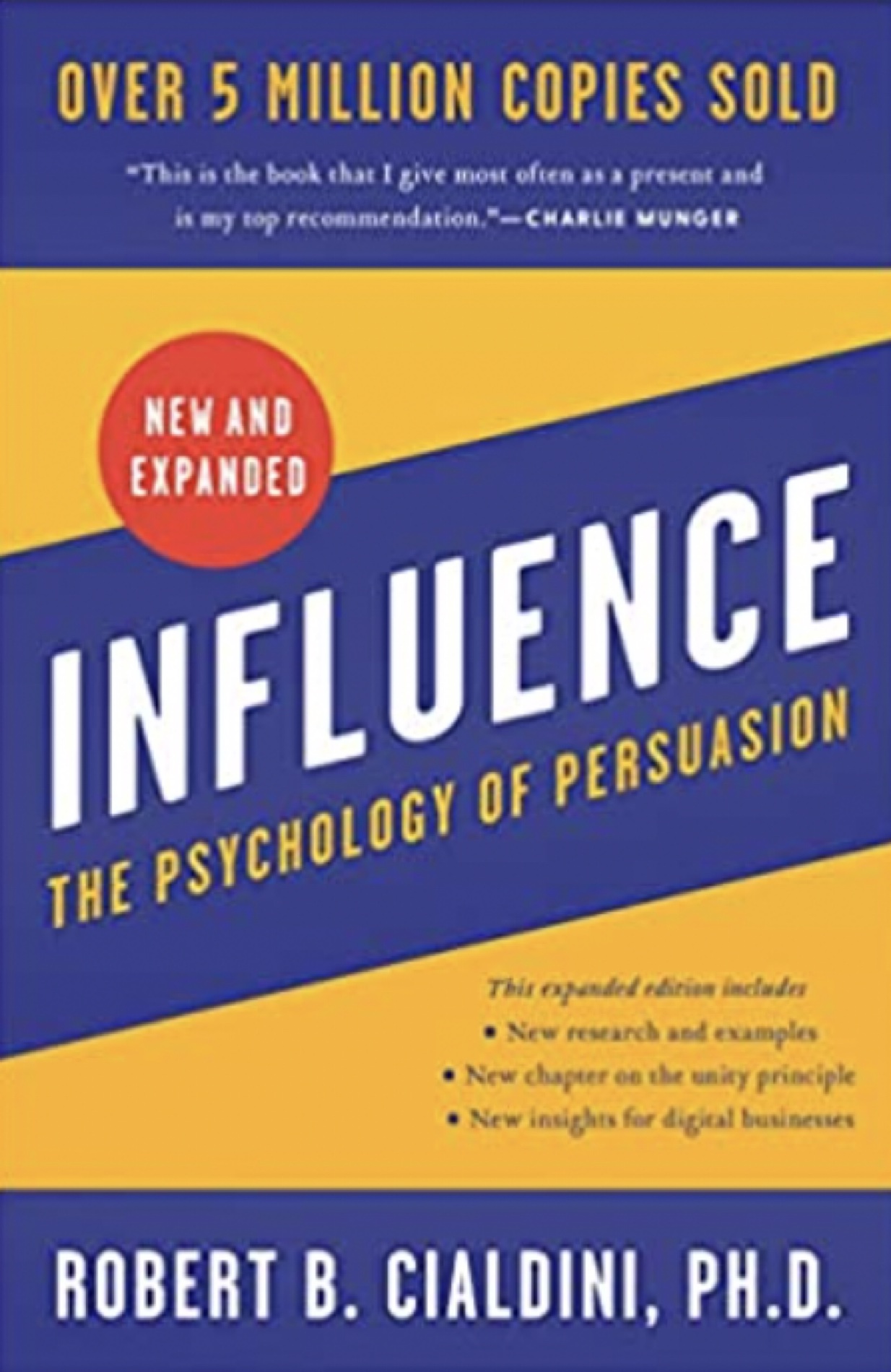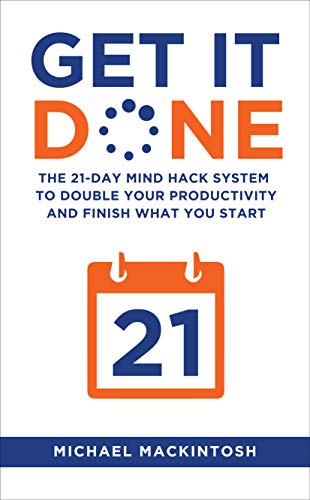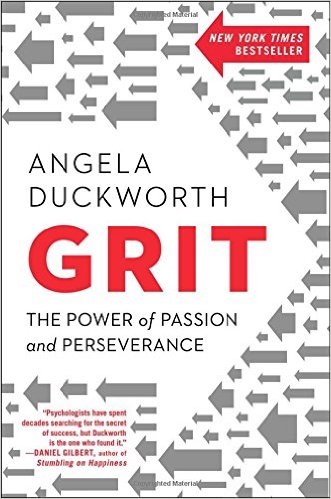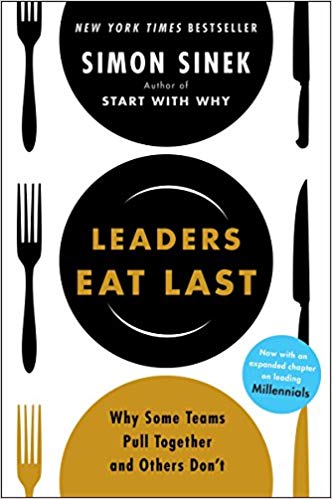Archive for the ‘Business Books’ Category
Monday, December 24th, 2018
Get It Done: The 21-day Mind Hack System to Double Your Productivity and Finish What You Start by Michael Mackintosh offers sound advice for people prone to procrastination and who suffer from the endless disruptions that exist in our hi-tech world. If this sounds like you be sure to get a copy along with one for your school’s professional development library.
Introduction
- This book is aimed at creative entrepreneurs but I believe that educational leaders can learn from it as well. It makes very big promises, but depending on where you are it should help you focus on what’s important, increase your productivity, and finish your most important projects. It also reminds us all to build in time for rest, relaxation, and celebrating our accomplishments.
Part I – 11 Essential Mind Hacks to Make Things Happen
- 1. The Prolonged Pain or the Short-Lived Pain: If you continue doing things that are inefficient and less effective you are inviting long-term pain. Change in the near term can be painful too, but if it leads to success you won’t have to deal with it in the long-term.
- 2. The Defining Choice: Acting differently and thinking differently is a choice. Keep in mind it is the only way you are likely to get different results.
- 3. The 80/20 Rule: This rule states that 80% of your input or effort leads to 20% of your outputs or results. Therefore, the opposite has to be true that 20% of your effort leads to 80% of your results. The trick is to identify the activities that produce 20% of your output and either do them less or do them when you are not so sharp.
- 4. Good is Good Enough: The old saying “the perfect is the enemy of the good” applies here. It is important sometimes to stop when you have reached the good enough point in a job unless it’s a job that has to be perfect like a computer program.
- 5. The Delusion of Time Management: The idea here is that you only have NOW in terms of doing something. Even if you are thinking about the future you are doing it NOW. Trying to micromanage your schedule is not likely to lead to great productivity. Rather than thinking about managing time, think about managing your thoughts, words, actions, energy, and focus. As you move through the day ask if what you are doing is moving directly toward your goals. Make your most important work a priority. Organize your day to make the most of your energy. If you are a morning person like me, save the most important work for the morning. (Doug: Yes, I’m writing this in the morning.) Recognize when you are a tired, hungry, or distracted and do what it takes to recharge. It’s not how much time you put into something, it’s how much high-quality energy you invest.
- 6. The Resistance: You can’t do something new, significant, and meaningful without resistance so get ready for it. Some can come from your lower self that is comfortable with the status quo. Be alert and look for it within and without so you can take it on.
- 7. Fears and Hallucinations: Fears can be real or irrational. They can be healthy and necessary for success. They can also arise when it’s not required. Unconscious fears include the unknown, failure, and not being good enough. Once you identify them you can accept that they only exist in your mind. This should help prevent the destructive worry that come with them.
- 8. Focus: You don’t want to try to make all of your dreams come true at the same time. The idea here is to bring one idea to completion before you begin another one. Fear could be part of the problem for people who try to do too many things at once.
- 9. How to Overcome Self-Doubt: This can sabotage you before you begin. Michael suggests that you focus on the people who will be helped if you complete what you are doing and realize that self-doubt, like most fears, is also irrational.
- 10. Do It Now: Everything happens in the now, and now won’t last forever. This should help you get going and avoid procrastination.
- 11. Do Less Work to Get More Done: You don’t do your best work when you work too hard. You are more likely to make mistakes and quality is likely to go downhill. Be sure to build rest and recharge into your game plan. Sleeping on a problem or just taking a walk can help you solve it. You are also more likely to screw up your family life and other important relationships. You still have to work hard, but working too hard can even make your sick.
Posted in Book Summaries, Business Books, Leadership Books | Comments Off on Get It Done: The 21-day Mind Hack System to Double Your Productivity and Finish What You Start by Michael Mackintosh
Monday, August 7th, 2017
Grit: The Power of Passion and Perseverance by Angela Duckworth shares her research and the work of others on the subject and explains that what we eventually accomplish depends more on our passion and perseverance than on our innate talent. This work can help you find your own passion and develop it. This is a vital book for parents, teachers, and human beings in general. Make sure your school library has at least one copy for starters.
1. Showing Up
- Angela starts with the story of her visits to West Point’s summer session for incoming freshman known affectionately as Beast Barracks. Due to the high dropout rate of plebs, the question was: what qualities are the best predictors of who makes it and who goes home early? The only metric the Army had was the Whole Candidate Score. It combined SAT/ACT scores, class rank, an expert appraisal of leadership potential, and performance on objective measures of physical fitness. The problem was that this score had no predictive value when it came to surviving the first summer or the full four-year program.
- What candidates needed it seems, was a never give up attitude, which had nothing to do with ability. When Duckworth heard this she decided to create an instrument to measure it. She then created the Grit Scale, which is included on page 55. She found that it was a good predictor for West Point. It also turned out to be a good predictor for other accomplishments such and earning college degrees. She found that there was no relationship between IQ and grit.
2. Distracted By Talent
- As a teacher early in her career Duckworth discovered that talent for math was different from excelling in math. She also found that her weakest students sounded smart when talking about things that interested them. She found that Americans endorse hard work five times more than intelligence. However, teachers are more likely to lavish attention on students they think are talented. Another problem is associated with tests for talent, which like tests for grit are imperfect.
3. Effort Counts Twice
- After being chided by her advisor while working on her PhD in psychology, Duckworth came up with two equations. Talent x Effort = Skill, and Skill x Effort = Achievement. Note that effort is included in both equations. While this theory does have a place for natural ability, it shows how effort is more important. This chapter gives examples of famous people who felt they succeeded thanks to their compulsive effort. In addition to talent and effort, there is also a place for opportunities and luck on the road to success. Encouraging parents with money are a prime example of opportunities.
Posted in Book Summaries, Business Books, Education Books, Leadership Books | Comments Off on Grit: The Power of Passion and Perseverance by Angela Duckworth
Wednesday, January 23rd, 2013
How To Deliver a TED Talk: Secrets of the World’s Most Inspiring Presentations (© 2012) by Jeremey Donovan, gives you a step-by-step guide to doing your own inspiring TED-style presentation. If you haven’t seen a TED Talk it’s time to start. Click the icon below to purchase this quick, quality read.
Posted in Book Summaries, Business Books, Education Books, Leadership Books | Comments Off on How To Deliver a TED Talk: Secrets of the World’s Most Inspiring Presentations
Tuesday, July 27th, 2010
Although this book by Robert Hooke was written in 1983, it is still applicable today. It can help you avoid being persuaded against your will if you only look at the numbers spouted by the data pushers with a critical eye. This book and my summary were written for people who don’t especially like numbers, as well as those who do.
Click here to see my summary of How to Tell a Liar from a Statistician.
Tags: Liars, Robert Hooke, Statistics
Posted in Book Summaries, Business Books, Education Books | Comments Off on How to Tell Liars From Statisticians Robert Hooke
Tuesday, December 15th, 2009
The Surprising Power of Our Social Networks and How They Shape Our Lives by Nicholas A. Christakis, MD, PhD and James H. Fowler, PhD is another must read for anyone who wants to understand how our social networks impact our lives. All educators should consider the implications of this work.
As the authors studied social networks, they began to think of them as human super organisms. They grow and evolve. All sorts of things flow and move within them. This super organism has its own structure and a function, and they became obsessed with understanding both. Once we see ourselves as part of a larger network, we can better understand our actions, choices, and experiences. These connections are natural and necessary and a force for good. Just as brains can do more than single neurons, so can social networks do things that no single person can do. To know who we are, we must understand how we are connected.
Click here to see the summary of this book.
Posted in Book Summaries, Business Books | Comments Off on How well are you Connected? – Nicholas Christakis
Friday, June 7th, 2024

Influence: The Psychology of Persuasion by Robert Cialdini describes the psychological process in people when they say yes and explains how these insights may be applied. While it was written as a business book, it also applies to teaching and everyday life. Be sure to put a copy in your professional development library.
1. Levers of Influence: (Power) Tools of the Trade
- Animals and people both have automatic behaviors that are set off by a single stimulus. For example, turkey mothers will care for an inanimate object if it makes the cheap sound of a baby turkey. Likewise, humans are much more likely to do a favor for a stranger if they are given a reason starting with the word because. Humans also think that expensive things are good as the word cheap is seen as inferior rather than inexpensive. Believing an expert is another automatic behavior. Life is complex and without our automatic rules of thumb, we wouldn’t get much done. It’s important, however, to realize when we have the time and the need to engage in more complex thinking.
- The contrast principle tells us that how we perceive something depends in part on things we have recently perceived. When two hands placed respectively in hot and cold water are moved to room temperature water, the one that was in hot water feels cold and the one that was in cold water feels hot. Also, seeing highly sexually attractive people on TV may make our spouses seem less attractive. There are several other examples here dealing with selling strategies.
2. Reciprocation: The Old Give and Take
- A basic norm of human culture is the obligation to somehow repay a person who gives or does something for you. Such future obligations often lead to continuing relationships. People can use this to their advantage by giving something before asking for something. Politicians do this and they are also easy to buy. So are scientists.
- People can also ask for a more extreme initial concession prior to lowering the ask. This often works a we often see the lesser obligation preferable to the greater one. The trick is to make your first offer just high enough. This usually makes one feel more responsible and satisfied. If someone gives you something for free, be ready for them to ask for something. Consider denying these requests.
3. Liking: The Friendly Thief
- We are more likely to say yes to someone we like. People who want something are therefore likely to do things to increase their likability. Being physically attractive is one way to increase likability. (Doug: This suggests that it’s a good idea to bet fit, well groomed, and well attired. In other words, dress for success.) We are also more likely to like people who are like us. Good salespeople also use this to their advantage. Associating something with someone famous has been shown to work.
- Praise is also used to increase likability. Giving praise to a third party that you know will get back to the person your are praising is effective. You can also use praise to give a person a reputation to live up to. Repeated contact in positive situations helps. Persian curriers knew that baring bad news was risky and even life threatening as the ancient Persians did kill the messenger. In all occasions associate yourself with as many good things as possible and visa versa. We won, they lost. Be alert for situations where you are liking someone more than would be expected. In such cases separate your feelings about the requester from the offer itself.
Posted in Book Summaries, Business Books, Education Books, Leadership Books | Comments Off on Influence: The Psychology of Persuasion by Robert Cialdini
Tuesday, March 30th, 2010
In Cynthia Barton Rabe’s outstanding book, she explains how organizations of all kinds and promote Zero-Gravity Thinking in order to solve all kinds of problems. If you want the low down as to how organizations squash innovation, start with my summary then purchase the book. If you want to know how to avoid the needless killing and suppression of innovative thinking, look no farther than these two vital resources.
Click here to see the summary of The Innovation Killer book.
Tags: Cynthia Rabe, Innovation, Renaissance Thinking, Zero-Gravity Thinking
Posted in Book Summaries, Business Books, Leadership Books | Comments Off on Innovation Killer: Are you a Zero-Gravity Thinker? – Cynthia Barton Rabe
Thursday, November 3rd, 2011
The Invisible Gorilla: And Other Ways Our Intuitions Deceive Us by Christopher Chabris and Daniel Simons, (©2010, CROWN: New York, NY.) is about six everyday illusions that profoundly influence our lives. They are the illusions of attention, memory, confidence, knowledge, cause, and potential. These are distorted beliefs we hold about our minds that are not just wrong, but wrong in dangerous ways. Once you know about these illusions, you will view the world differently and think about it more clearly. You will recognize when people are taking advantage of illusions in an attempt to obfuscate or persuade. Seeing through these veils will help connect you with reality. I will soon post a summary of Cathy Davidson’s Now You See It which draws heavily on this book.
Tags: Christopher Chabris, Daniel Simons, Invisible Gorilla
Posted in Book Summaries, Business Books, Education Books, Leadership Books | Comments Off on Invisible Gorilla Revised Summary
Friday, October 18th, 2019
Leaders Eat Last: Why Some Teams Pull Together and Others Don’t by Simon Sinek tells stories about leaders who found success mainly by putting people first. Seeking short term gains and seeking to serve one’s own selfish interests is short-sighted and sure to fail over time. This book will help leaders in all fields be the type of leader they wish they had. This would be a great textbook for any leadership course. Be sure to get a copy for leaders you know.
Forward by George J. Flynn Lieutenant General, U.S. Marine Corps (Ret.)
- An organization’s success or failure is based on leadership excellence and not managerial acumen. These organizations have strong cultures and shared values and understand the importance of teamwork and trust. They understanding the importance of people and relationships. The true price of leadership is the willingness to place the needs of others above your own. You must know your people and realize that they are much more than an expendable resource. Good leaders truly care. Leaders who take care of their people can never fail.
Part 1 – Our Need to Feel Safe
- 1. Protection from Above: We start with a story about a pilot risking his life to save 22 men in Afghanistan. He said he was just doing his job and that empathy for others is the single greatest asset he had to do his job. “They would have done it for me.” Empathy helps you share your glory and help those with whom you work to succeed. This strong foundation leads to success that no amount of money, fame, or awards can buy. Exceptional organizations have cultures in which leaders provide cover from above and the people on the ground look out for each other thanks to empathy.
- 2.Employees Are People Too: By getting rid of time clocks, bells that signaled breaks and lunch, locks on boxes of spare parts, and replacing free anytime phones with asking for permission payphones one leader used trust to turn his company around. People offered to donate vacation days to an employee with family problems. The workers also took better care of the machines. This happens when leaders listen and avoid coercion. They treat workers like family and realize that everyone is someone’s son or daughter.
- 3. Belonging: The authors use the metaphor of The Circle of Safety. It’s like four oxen standing so that no matter which direction the lion comes from it will always be met be horns. After thirteen weeks of boot camp, Marines know that they can trust every other Marine to protect them. It’s important that everyone in an organization feel that way about every other member so that everyone feels as safe as possible. This will result in better collaboration and problem-solving.
- 4. Yeah, but…: Stress can have negative effects on one’s health so it’s important to avoid it as much as possible. The more control a person has the less likely they are to be stressed. Top leaders, therefore, do what they can to give workers control and to acknowledge their efforts. We also know that coming home angry from a job you hate will have a negative impact on your children. You may be better off with no job rather than one you hate.
Part 2 – Powerful forces
- 5. When Enough Was Enough: In order to survive, humans have had to rely on cooperation and mutual aid rather than competition. If we don’t look out for our group, our group won’t look out for us. Conversely, if we don’t take care of ourselves first, we won’t be of much use to others.
- 6. E.D.S.O: Four brain chemicals help us survive. Endorphins are the brain’s pain relievers. They give us a remarkable capacity for physical endurance. Dopamine causes a feeling of satisfaction when we accomplish something. It makes us a goal-oriented species. Together these two chemicals help us get things done. Serotonin gives us the feeling of pride we get when we perceive that others like or respect us. As social animals we need approval. This causes us to give of our selves. Oxytocin is the feeling of friendship, love, or deep trust. Without it, there would be no empathy. You get it when to do something nice for someone. Such behaviors make us happy and help us live longer.
- 7. The Big C: When something goes wrong or you don’t feel safe your body releases cortisol. It’s the chemical that causes feelings of anxiety, discomfort, or stress. It’s like an early warning system. If you work with a group where members don’t care much about one another’s fate cortisol starts to seep through your veins. It inhibits the release of oxytocin, the empathy chemical. One can adapt to regular doses of cortisol, but it isn’t good for one’s health. Here is a story of a company that adopted a no-fire policy. As a result, people communicated more openly and pointed out problems more quickly. Turnover shrank and people felt safe.
Part 3 – Reality
- 9. The Courage to Do the Right Thing: Here we have a story of an aircraft controller who broke the rules and saved many lives. The point is that you have to know when to break rules and that you need rules to keep things running well. Also, relationships aren’t really based on rules.
- 10. Snowmobile in the Desert: Snowmobiles don’t run so well in the desert. Sometimes amazing humans are like snowmobiles in the desert. Sometimes the harder we try to do things right the worse we feel. We need to get the environment right at work and at home and learn how to work together as nothing great was ever accomplished by a single person.
Posted in Book Summaries, Business Books, Leadership Books | Comments Off on Leaders Eat Last: Why Some Teams Pull Together and Others Don’t by Simon Sinek
Monday, October 29th, 2012
Linchpin: Are You Indispensable? by Seth Godin (©2011, The Penguin Group: New York, NY) will help you to become indispensable, which Seth sees as a choice you can make. It you are not happy with the impact you are currently making, this book may be the answer. Although written from a business perspective, Seth gives schools some blame for stifling linchpin behaviors. I hope educators can use this book to prepare their students to be linchpins rather than cogs in a machine. Be sure to click the link at the bottom of any page to buy this valuable book.
Tags: Linchpin, Seth Godin
Posted in Book Summaries, Business Books, Leadership Books | Comments Off on Linchpin: Are You Indispensable? by Seth Godin









